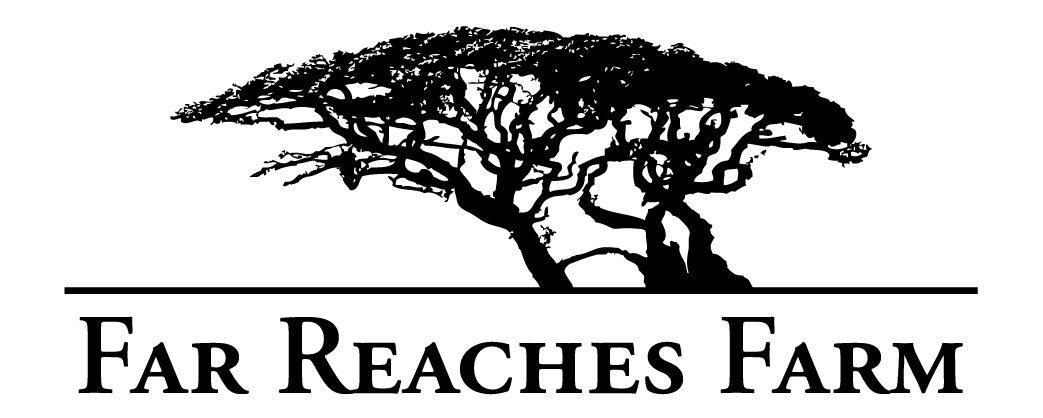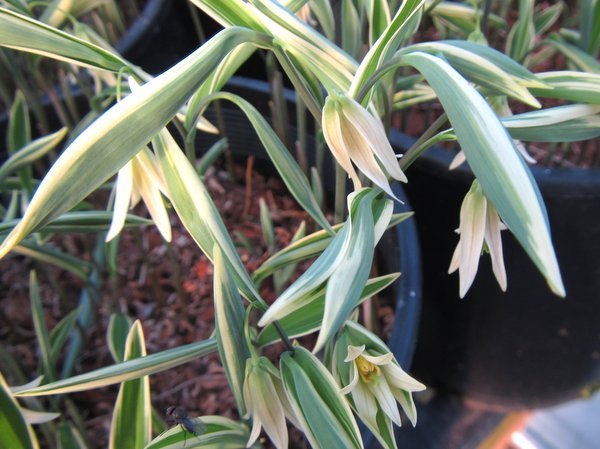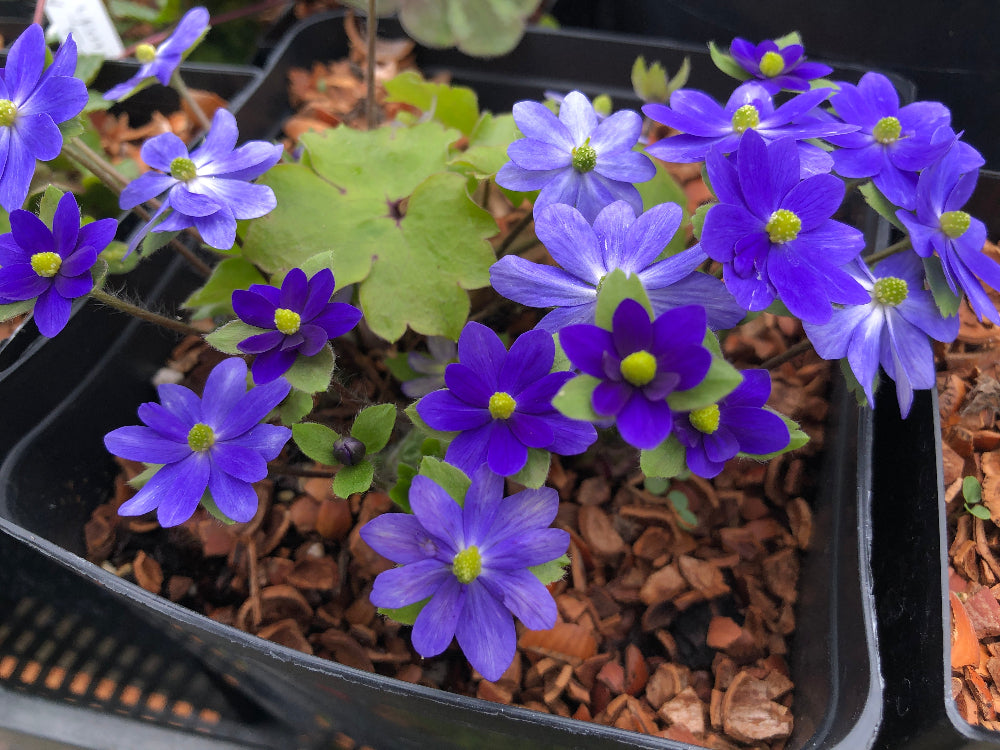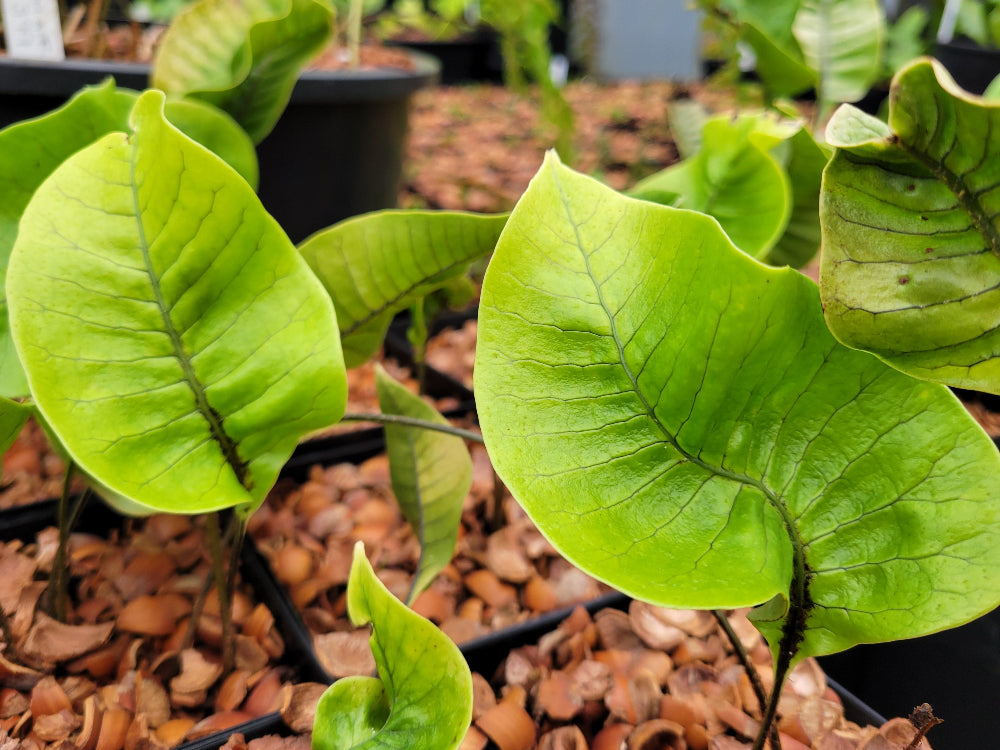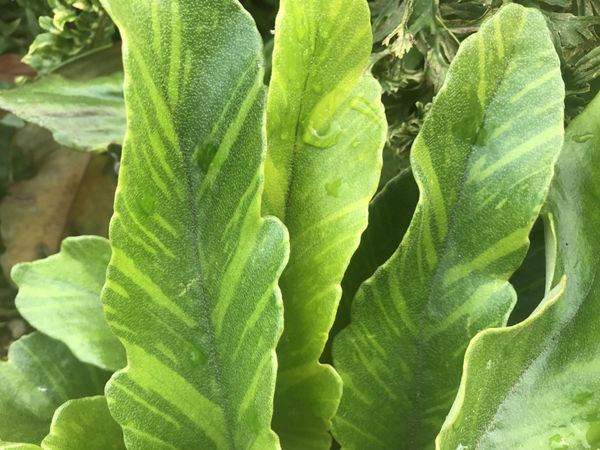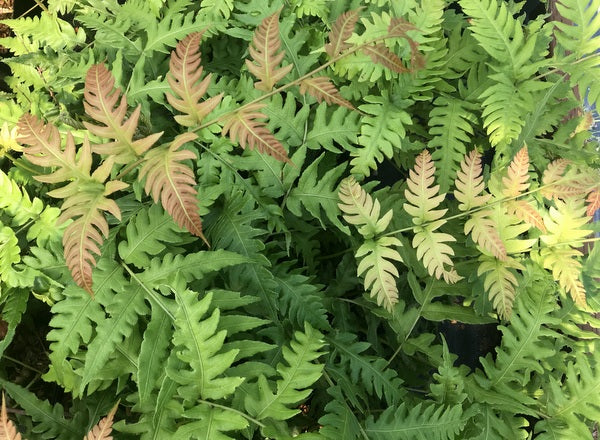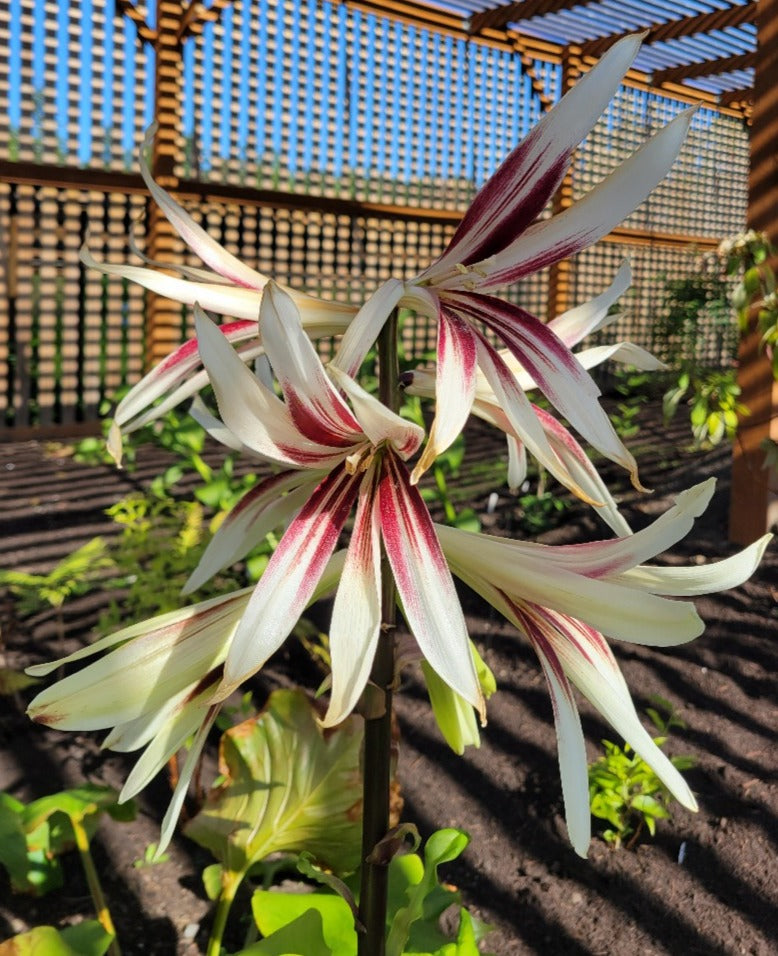Sort by:
1758 products
1758 products
A interesting oddity from the annals of the Far Reaches nursery catacombs. In yonder days we brought back on our jolly jaunt to the UK plants of Primula poissonii from our esteemed colleagues at Rumbling Bridge nursery, so enthralled were we with our species plant that we had the audacity to write (true) on the tag, inviting a curse of wanton succubus primulas which promptly assaulted our chaste new acquisitions. We have suspicions that the the lascivious demons to blame were somewhere in the spectrum of P. wilsonii but who's to say. Their sin-stricken offspring are more loosely held and a bit darker than poissonii. Romance novel fans, this one's for you.
Most cultivars of the dwarf crested iris fiddle about with the original flower's saturation filter, Merle however has added a splash of new hue giving rise to a richly royal purple colored flower that may even have a tinge of deep red to the discerning eye. Certainly one of the most vibrant selections of this universally good species and one I wouldn't mind on a brooch or ring.
One of the Eastern US native Hepatica species that can be found plastered to mossy boulders in the woods providing some of the earliest harbingers of the Spring flower season. Classic liverspotted leaves and bright flowers somewhere on the spectrum of indigo, pink, and white. Like a humusy shelted location and also take well to pot culture.
This delightful hybrid Hepatica selection originates from Connecticut grower Lincoln Foster and more than keeps up with even the best of those produced by the British Hepatica elite. Impossibly rich purple flowers which do away with the distraction of stamens in favor of variably semi-double petals and a bright yellow button of stigmas.
For those uninitiated in 19th century French lingo or types of Carnation hybrids picotee basically means this is an edgy plant. Not in the sense that it skulks in alleys with its black-dyed hair swept blindingly over one eye but in the sense that it has a colored edge. Sulcatum is a particularly variable species when it comes to color with the bulk of variations often falling into a muddy mix of reds, pinks, and whites but this ones surprisingly clear with broadly white petals bordered in a wine red. While letting go of any of these may send Kelly over the edge, you can be assured that it will certainly give your little Trillium collection a unique edge over the competition.
With stereotypical German directness and efficiency Rotlaub means simply red leaf, no trademarked series name and all rights reserved tradename of Rockstar Red Rager needed when the attractive foliage does the talking for you. In the striking leaf big leagues with things like Gunnera and Podophyllum, Rodgersia certainly holds its own with large, leathery, jagged leaflets in mass layering themselves up to nearly 4 ft when given a nice moist bank to sink their teeth into. The sprays of white summer flowers and red new growth in this form are an excess it seems even the most utilitarian of plant-namers can't resist. But don't worry, the easy-to-please nature and fair hardiness range recenter things.
The first fern offering from our North Vietnam collections, this poor fella has been called as many names as even the most bullied of unfortunates from Lepisorus to Neolepisorus to the sci-fi devilry of Neocheiropteris. Through the torrid taxonomic seas it has clung to its floating board of delightful egg-shaped-ness, keeping its ovate epithet intact and acing that old proto-parenting assignment. The bright green egg shaped fronds with a rough papery texture are wholly unique and make for one of the ultimate pot displays or epiphytic wonders (for milder climes). We recently planted one out in our tufa wall and are eager to see how it performs for us here. Very rarely offered anywhere due to its slowness and I have never seen this pure green form offered anywhere stateside. One for the true botanical connoisseurs.
A hybrid between E. moorei and E. lucida that grew from a chance cross at Hillier's nursery, the original plant was cloned and distributed under the name 'Winton' and we preserve that name here to differentiate it from any further x hillieri selections. Retains the glossy narrow semi-evergreen foliage of its parents with pure white flowers beloved by bees and pollinators. Has shown excellent hardiness, anecdotally surviving a below 10F winter freshly planted in a nearby garden. A child which may well outexcel its parents.
One of our favorite West Coast Lily native species, this can be found in southern Oregon where it often grows in associated plant communities with the Darlingtonia or Pitcher Plant. These are seed grown from a wild collection by Ron Ratko and are near or at flowering size. Red/orange Turk's Cap flowers.
